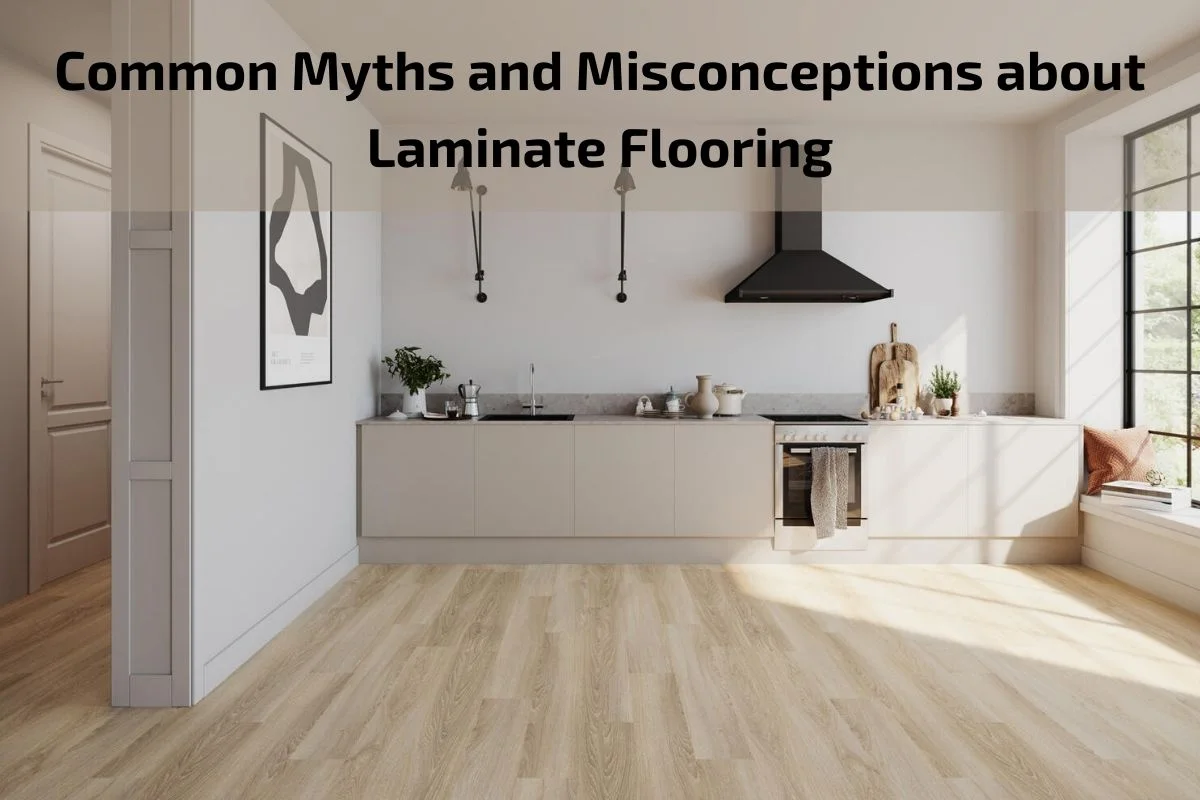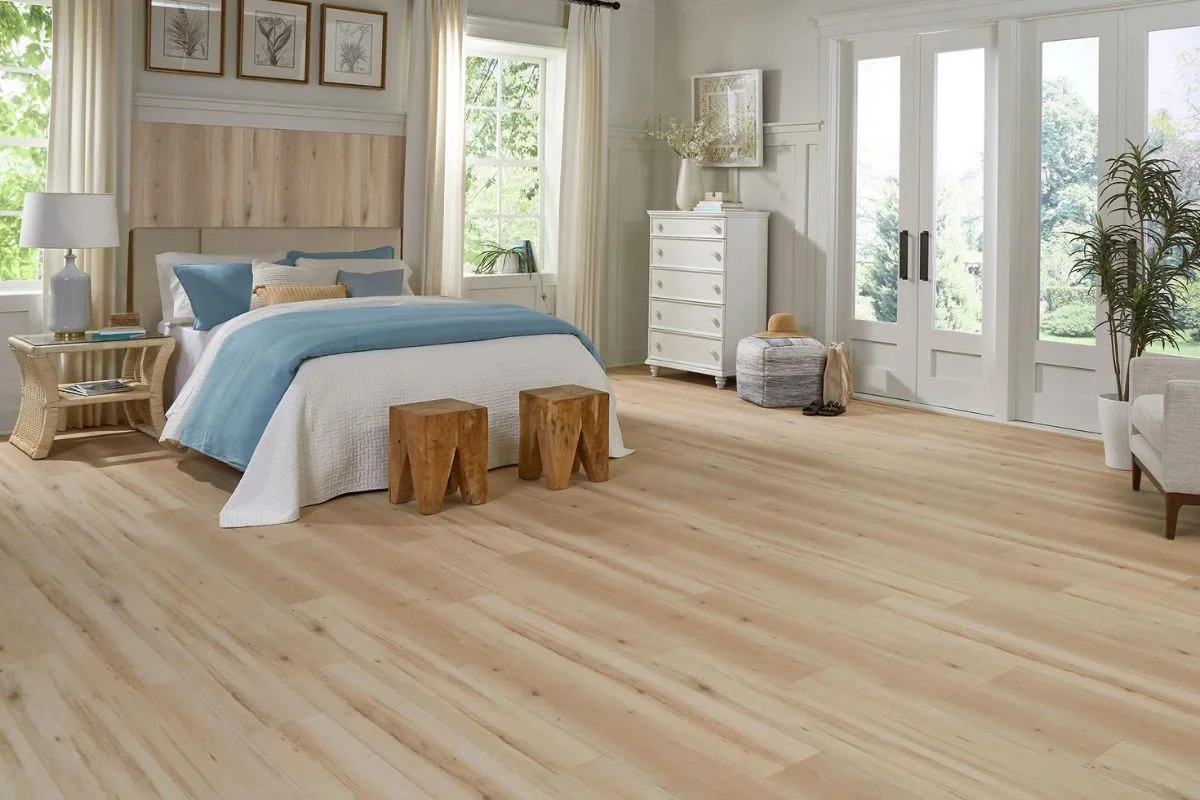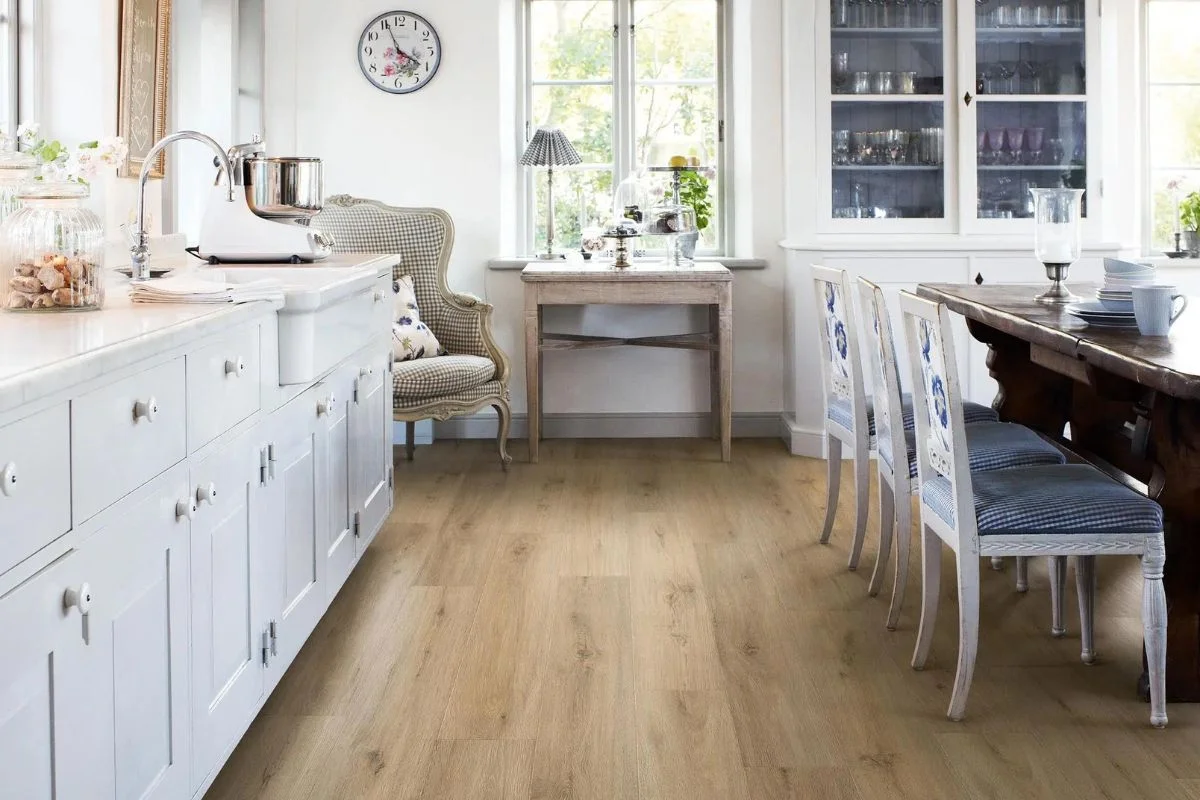Laminate flooring has become a popular choice for homeowners seeking durable, affordable, and aesthetically pleasing flooring options. However, despite its widespread use, there are several myths and misconceptions surrounding laminate flooring that often lead to confusion among consumers. In this article, we will debunk some of the most common myths associated with laminate flooring and provide clarity on its features, benefits, and suitability for various spaces. By understanding the truth behind these myths, homeowners can make informed decisions when considering laminate flooring for their homes.
Definition and Overview of LAMINATE FLOORING
Laminate flooring is a versatile and cost-effective flooring option that has gained popularity in both residential and commercial settings. It is a synthetic flooring product made by fusing multiple layers of materials together using heat and pressure. The core layer of laminate flooring is typically composed of high-density fiberboard (HDF) or particleboard, which provides stability and durability. This core layer is then topped with a photographic layer that simulates the look of wood, tile, or stone, followed by a transparent wear layer that provides protection against scratches, stains, and fading.
Laminate flooring is known for its affordability, ease of installation, and low maintenance requirements. It offers a wide range of design options, including various wood grains, textures, and finishes, allowing homeowners to achieve the look of natural hardwood, ceramic tile, or stone at a fraction of the cost. Laminate flooring is also available in different plank sizes and installation methods, such as click-lock systems, making it suitable for virtually any room in the home.
Overall, laminate flooring provides a durable and attractive flooring solution that offers the look of natural materials without the high cost and maintenance requirements. Its versatility, affordability, and ease of installation have made it a popular choice for homeowners looking to enhance the aesthetics and functionality of their living spaces.
Benefits of Laminate Flooring
Laminate flooring offers numerous advantages that make it a popular choice among homeowners and commercial property owners alike. Here are some key benefits:
Durability: Laminate flooring is highly durable and resistant to scratches, dents, and stains, making it ideal for high-traffic areas in homes and commercial spaces. The wear layer on top of the laminate plank provides added protection against everyday wear and tear.
Affordability: One of the most significant benefits of laminate flooring is its affordability compared to natural materials like hardwood, tile, or stone. Laminate flooring provides the look and feel of these materials at a fraction of the cost, making it a budget-friendly option for homeowners on a tight budget.
Versatility in Design: Laminate flooring comes in a wide range of designs, colors, and finishes, allowing homeowners to choose the style that best complements their interior decor. Whether you prefer the look of hardwood, tile, or stone, there is a laminate flooring option to suit every taste and aesthetic preference.
Easy Installation: Laminate flooring is designed for easy installation, with many options featuring a click-lock system that allows planks to snap together quickly and securely. This means homeowners can save time and money on installation costs by tackling the project themselves or hiring professionals for a straightforward installation process.
Low Maintenance: Laminate flooring requires minimal maintenance to keep it looking its best. Regular sweeping or vacuuming, occasional mopping with a damp cloth, and prompt cleanup of spills are typically all that’s needed to maintain the appearance and longevity of laminate flooring. Unlike hardwood flooring, laminate does not require refinishing or resealing over time.
Resistance to Moisture: While not completely waterproof, laminate flooring is more resistant to moisture than hardwood or carpeting. With proper installation and sealing of seams, laminate flooring can withstand spills and moisture in areas such as kitchens, bathrooms, and basements, making it a practical choice for these spaces.
Types and Styles of Laminate Flooring
Laminate flooring comes in a variety of types and styles to suit different aesthetic preferences and functional needs. Here are some common types and styles of laminate flooring:
Wood Grain Laminate: Wood grain laminate flooring is designed to mimic the appearance of hardwood floors, with a range of wood species available, including oak, maple, cherry, and walnut. It offers the warmth and natural beauty of wood without the high cost and maintenance requirements.
Tile Effect Laminate: Tile effect laminate flooring replicates the look of ceramic or stone tiles, offering the appearance of a tiled floor without the coldness or hardness of real tile. It comes in a variety of sizes, shapes, and patterns, including square, rectangular, and hexagonal tiles.
Embossed Laminate: Embossed laminate flooring features textured surfaces that mimic the grain and texture of natural materials like hardwood or stone. It adds depth and dimension to the flooring, creating a more realistic and tactile feel underfoot.
High Gloss Laminate: High gloss laminate flooring has a shiny, reflective surface that adds a touch of elegance and sophistication to any space. It is available in a variety of colors and finishes, ranging from classic white and black to bold red and blue hues.
Hand-Scraped Laminate: Hand-scraped laminate flooring is designed to resemble handcrafted hardwood floors with subtle grooves and indentations that mimic the natural imperfections found in real wood. It adds character and charm to the flooring, creating a rustic or vintage look.
Wide Plank Laminate: Wide plank laminate flooring features wider and longer planks than traditional laminate flooring, creating a spacious and open feel in any room. It is available in various wood species and finishes, offering a contemporary twist on classic hardwood flooring.
Waterproof Laminate: Waterproof laminate flooring is specially designed to withstand moisture and spills, making it suitable for use in areas prone to moisture, such as kitchens, bathrooms, and basements. It features a waterproof core and sealed edges to prevent water damage and warping.
Laminate with Attached Underlayment: Some laminate flooring comes with an attached underlayment, which helps reduce noise, provides added cushioning underfoot, and simplifies the installation process by eliminating the need for a separate underlayment layer.
Installation Process for Laminate Flooring
Installing laminate flooring is a straightforward process that can be completed by DIY enthusiasts or professional installers. Here are the key steps involved in the installation process:
Prepare the Subfloor: Ensure that the subfloor is clean, flat, and dry before installing laminate flooring. Remove any existing flooring materials, such as carpet, tile, or hardwood, and make any necessary repairs to the subfloor to ensure a smooth and level surface.
Acclimate the Flooring: Allow the laminate flooring planks to acclimate to the room’s temperature and humidity levels for at least 48 hours before installation. This helps prevent the planks from expanding or contracting after installation.
Install Underlayment: Lay down a moisture barrier or underlayment over the subfloor to provide cushioning, noise reduction, and moisture protection for the laminate flooring. Secure the underlayment in place using adhesive or tape, ensuring that it covers the entire floor area.
Plan the Layout: Plan the layout of the laminate flooring to ensure a balanced and aesthetically pleasing installation. Start by determining the direction in which you want the flooring planks to run, taking into account the room’s dimensions and layout.
Cut Planks to Size: Measure and cut the laminate flooring planks to fit around doorways, corners, and other obstacles in the room. Use a circular saw, jigsaw, or laminate cutter to make precise cuts, ensuring a snug and seamless fit.
Install the First Row: Begin installation by laying the first row of laminate flooring planks along the longest wall in the room, with the tongue side facing the wall. Leave a small gap between the planks and the wall to allow for expansion.
Click and Lock Planks: Connect the laminate flooring planks together using the click-and-lock mechanism, ensuring a tight and secure fit. Use a tapping block and mallet to gently tap the planks into place along the long edge and short edge joints.
Stagger the Joints: Stagger the end joints of the laminate flooring planks in adjacent rows to create a more stable and visually appealing installation. Use a random pattern and avoid lining up joints in consecutive rows.
Install Transition Strips: Install transition strips or molding around the perimeter of the room and at doorways to create a finished look and cover any expansion gaps. Secure the transition strips in place using adhesive or nails.
Finishing Touches: Once the laminate flooring is installed, reinstall baseboards and trim, and fill any expansion gaps with matching laminate flooring filler or silicone caulk. Clean the floor thoroughly to remove any dust or debris.
Maintenance and Care Tips for Laminate Flooring
Laminate flooring is known for its durability and low maintenance requirements. With proper care and maintenance, laminate flooring can retain its beauty and functionality for many years. Here are some maintenance and care tips to help keep your laminate flooring looking its best:
Regular Cleaning: Sweep, vacuum, or dry mop your laminate flooring regularly to remove dust, dirt, and debris. Use a soft-bristled broom or vacuum cleaner with a hard floor attachment to prevent scratches.
Damp Mopping: Periodically damp mop your laminate flooring using a microfiber mop or cloth dampened with water and a mild, pH-neutral cleaning solution. Avoid using excessive water, as standing water can damage the laminate planks.
Avoid Harsh Cleaners: Avoid using abrasive cleaners, harsh chemicals, or wax-based polishes on laminate flooring, as they can damage the surface and cause discoloration. Stick to manufacturer-recommended cleaning products or homemade solutions like vinegar and water.
Wipe Up Spills Promptly: Immediately wipe up any spills or accidents on laminate flooring using a clean, dry cloth or paper towel. Liquids can seep into the seams and edges of laminate planks, causing swelling or warping if left unattended.
Use Furniture Pads: Place felt or rubber pads under furniture legs and feet to prevent scratches and indentations on laminate flooring. Avoid dragging heavy furniture or sharp objects across the floor, as they can cause damage to the surface.
Protect Against Sunlight: Minimize direct exposure to sunlight by using blinds, curtains, or UV-resistant window films to protect your laminate flooring from fading or discoloration over time.
Use Area Rugs: Place area rugs or mats in high-traffic areas, such as entryways, hallways, and in front of kitchen sinks, to protect laminate flooring from wear and tear. Make sure the rugs have non-slip backings to prevent accidents.
Repair Minor Damage: For minor scratches or chips in the laminate flooring surface, use laminate repair kits or colored wax pencils to fill in the damaged areas. Follow the manufacturer’s instructions carefully for best results.
Prevent Moisture Damage: Avoid excessive moisture exposure to laminate flooring, especially in areas prone to spills or humidity, such as bathrooms and kitchens. Use mats or rugs in front of sinks, dishwashers, and refrigerators to catch drips and splashes.
Follow Manufacturer Guidelines: Always follow the manufacturer’s guidelines and recommendations for cleaning, maintenance, and warranty coverage for your specific laminate flooring product.
Conclusion
In conclusion, laminate flooring offers a durable, cost-effective, and versatile flooring solution for both residential and commercial spaces. With its wide range of styles, easy installation process, and minimal maintenance requirements, laminate flooring is a popular choice for homeowners and designers alike.








